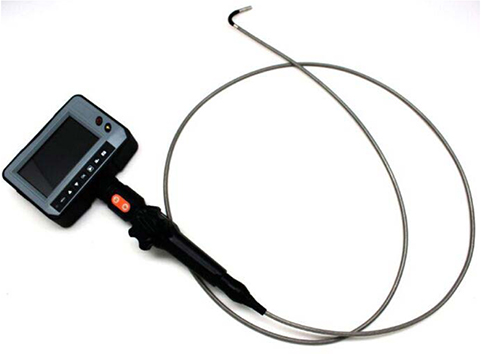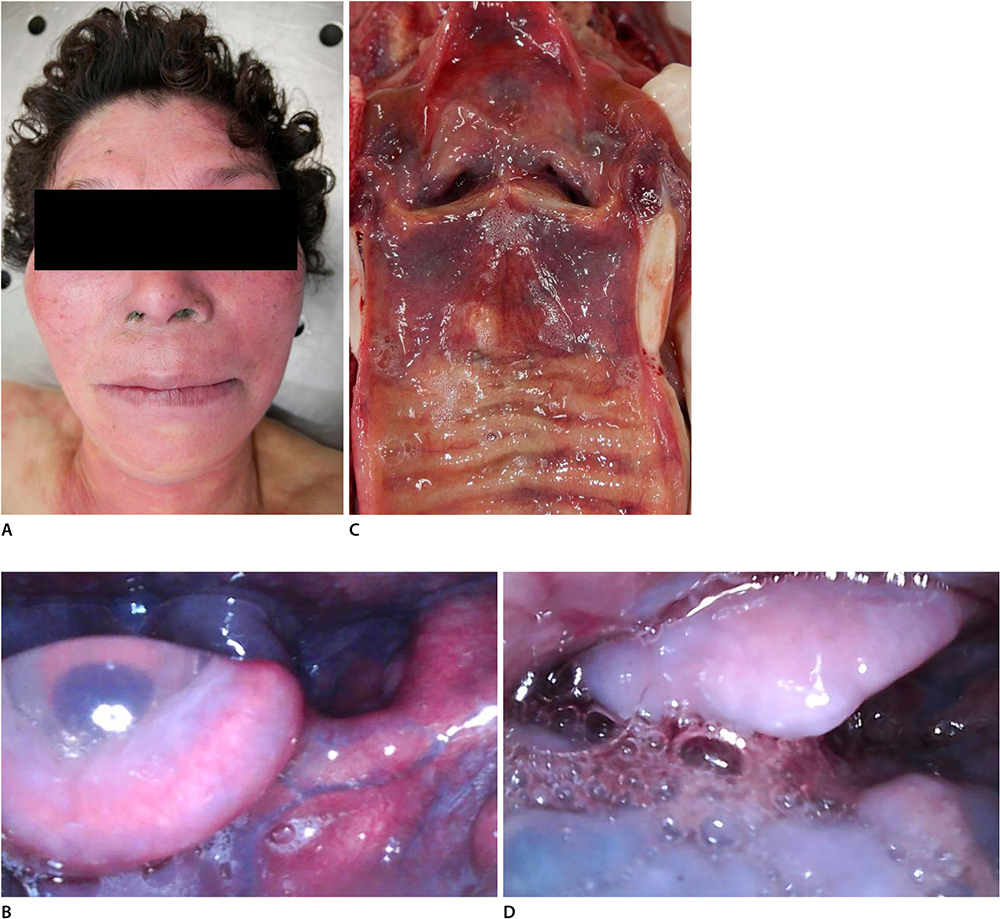Korean J Leg Med.
2017 Nov;41(4):94-99. 10.7580/kjlm.2017.41.4.94.
Endoscopic Examination in Postmortem Examination
- Affiliations
-
- 1Biomedical Research Institute, Chonnam National University Hospital, Gwangju, Korea. pdrdream@gmail.com
- 2Forensic Medicine Division, National Forensic Service Gwangju Institute, Jangseong, Korea.
- KMID: 2397683
- DOI: http://doi.org/10.7580/kjlm.2017.41.4.94
Abstract
- Autopsy is recognized as the gold standard for examining the body of the deceased. However postmortem inspection, which is a method for examining the body through non-invasive modalities, is very limited. Therefore, several methods have been studied to complement postmortem examination, and endoscopy emerged as a possible method. The authors of the present study performed endoscopic examination before autopsy, and the endoscopic findings were confirmed by subsequent autopsy. The endoscope was inserted mainly through the nostril due to the rigor mortis of the jaw joint. The pharynx, larynx, trachea, and esophagus were examined. Endoscopic examination was performed on a total of 35 cases. Endoscopy revealed froth in the airway (drowning cases), as well as the presence of thermal denaturation of structures in the airway and soot attached to the froth in the airway (fire death cases). However, relevant findings were not noted during external examination. In addition, agrochemical substances were detected in the airway (agrochemical poisoning death cases) during endoscopic examination. The study found that useful information can be obtained for investigating the death and estimating postmortem interval through endoscopic examination. It is thought that minimally invasive autopsy procedures, including endoscopy, cannot replace conventional autopsies, but can be used as adjuncts instead. In particular, minimally invasive autopsy procedures are thought to be useful for postmortem inspection. To this end, continued studies, as well as the development of equipment suited for postmortem examination, are needed.
MeSH Terms
Figure
Reference
-
1. Park JH, Na JY, Lee BW, et al. A statistical analysis on forensic autopsies performed in Korea in 2015. Korean J Leg Med. 2016; 40:104–118.2. Lee S, Park JP, Gong H, et al. Remarkable postmortem CT findings in forensic autopsy. Korean J Leg Med. 2014; 38:103–112.3. Kim HG, Park JW, Cho WY, et al. The discrepancy of the cause and manner of death between death certificates and autopsy reports. Korean J Leg Med. 2014; 38:139–144.4. Na JY, Kim HG, Kim EJ, et al. Discrepancies in the cause and manner of death reported in postmortem inspection and autopsy. Korean J Leg Med. 2016; 40:119–124.5. Burton JL, Underwood J. Clinical, educational and epidemiological value of autopsy. Lancet. 2007; 369:1471–1480.6. Kucerova S, Hejna P, Dobias M. Benefits of otoscopy in forensic autopsy practice: a prospective study. Soud Lek. 2016; 6:14–17.7. Denzer UW, von Renteln D, Lubke A, et al. Minimally invasive autopsy by using postmortem endoluminal and transluminal endoscopy and EUS. Gastrointest Endosc. 2013; 78:774–780.8. Fan JK, Tong DK, Poon JT, et al. Multimodality minimally invasive autopsy: a feasible and accurate approach to post-mortem examination. Forensic Sci Int. 2010; 195:93–98.
- Full Text Links
- Actions
-
Cited
- CITED
-
- Close
- Share
- Similar articles
-
- The Realities of Postmortem Investigation and Examination in Chungju, Eumseong Provinces
- Discrepant Causes of Death between Medical Death Certificates and Autopsy Reports (II)
- Proposal of Comprehensive Act for Postmortem Examination to Improve Death Certification System
- The Discrepancy of the Causes of Death between Medical Death Certificates and Autopsy Reports
- Recommendation of the Guideline for Postmortem Inspection at Scene on Forensic Aspects





